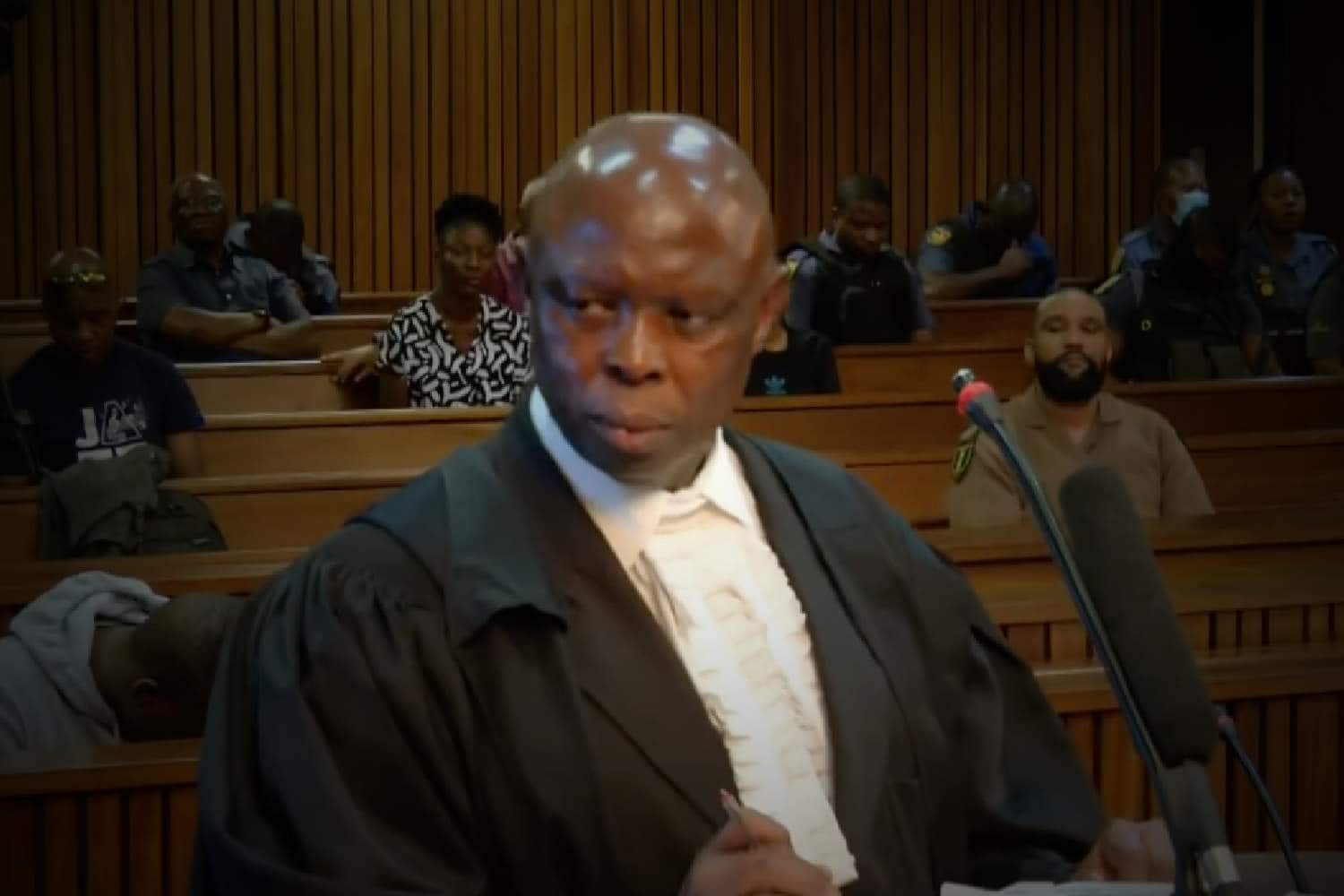The Senzo Meyiwa murder trial resumes at the Pretoria High Court today, with Judge Ratha Mokgoatlheng expected to continue proceedings where they ended on Thursday.
At issue is the defence version of events around the arrest and alleged assault of accused number one, Muzi Sibiya, and how that evidence fits into the broader question of the voluntariness and reliability of his statements in the Senzo Meyiwa case.
On Thursday, much of the day dealt with pinpointing the exact location and circumstances of Sibiya’s alleged assault, including whether it occurred inside a building or outside within a municipal complex near the Vosloorus police station.
The court revisited an earlier in-loco inspection and compared it with testimony given during both the trial-within-a-trial and the main trial to clarify inconsistencies.
Sibiya maintained that he “was assaulted at the municipal area” near the Vosloorus police station, not inside an office, describing the spot as tucked away from the main road and difficult for passersby to see.
He said his “hands were tied behind” him and that a plastic bag was placed over his face while he was kicked and beaten. Sibiya told the court he suffered internal pain and still bears wrist marks years later.
He also said there were numerous officers present — including traffic personnel — and estimated the number as “14 or 15 or more.”
He repeatedly linked the setting to the Covid-19 period, arguing there were few people around to witness what happened.
A key line of questioning concerned whether Sibiya had ever said the assault took place “inside” an office or merely in the office precinct.
Counsel read portions of the record to him and contrasted them with the court’s site visit notes, which referenced the mixed-use “municipal area” — sometimes described in testimony as a “Gold Sport/Golden Spot” zone — that includes the police station, municipal offices, shops and ranks.
The court also revisited references to nearby facilities, including a fire station described in the record as operating 24 hours, and whether lighting and sightlines from the main road could have allowed members of the public to observe the incident.
Sibiya maintained that parked vehicles and buildings blocked views into the precise spot where he says he was assaulted.
Another contested point was the number of vehicles and officers present. Parts of the transcript reflect State witnesses placing fewer vehicles at the municipal complex, with the count increasing later when a senior officer arrived.
Defence counsel pressed the State on why certain movement logs (such as AVL data or notebook entries) were not produced to settle who was at the scene and when.
The court noted these disputes for resolution against the written record and the in-loco observations.
What this means for today: the court is likely to continue with cross-examination on the assault location, the visibility of the alleged assault site, the number and identity of officers present, and how these issues bear on the admissibility and weight of any statements attributed to Sibiya.
Depending on time, the State may seek to introduce further portions of the transcript to challenge Sibiya’s consistency, while the defence is expected to emphasise gaps or contradictions in the State’s witnesses and documentation.
Watch the live broadcast of the Senzo Meyiwa trial below:
